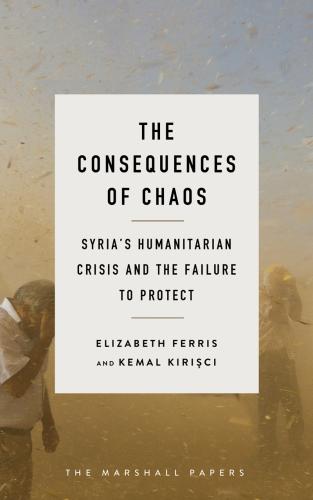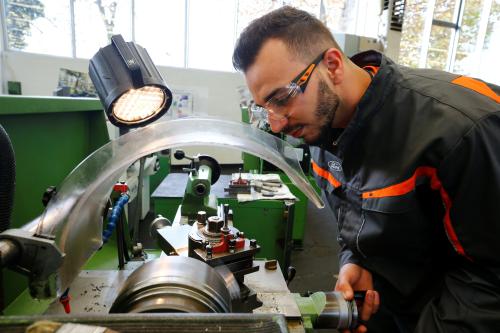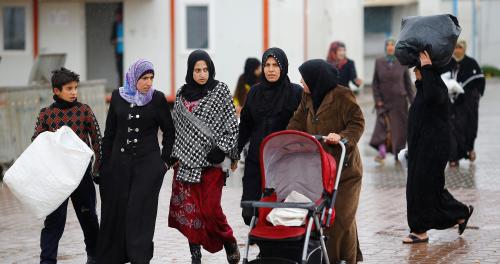Europe’s leaders have tussled this summer—with each other and with their respective publics—over how to handle a political crisis over migration that threatens to upend the continent’s system of open borders. There is little on which member states seem to agree. Yet one proposal has earned broad favor: sending migrants rescued at sea to asylum processing centers outside of Europe. In June, European leaders agreed that the European Council and Commission should “swiftly explore” the concept.
The policy has a fraught precedent: Australia’s years-long effort to offshore its asylum processing. EU leaders are well aware of the model. A group of them reportedly met in secret with senior Australian officials to discuss how they might adopt and adapt at least some aspects of that country’s approach to asylum seekers. What they might have learned should give them pause.
AUSTRALIA’S EXPERIENCE IS NOT ONE TO EMULATE
For the past five years, more than 1,500 children, women, and men have been held on the Pacific nations of Nauru and Papua New Guinea in facilities paid for by the Australian government and run by private contractors. They are asylum seekers who attempted to reach Australia by boat without a valid visa. Under Australian policy, they were transferred offshore and are denied access to protection in Australia. Those identified as refugees may have a chance at resettlement in the United States under a deal negotiated by the Australian government in 2016, but the exact number who will ultimately benefit from this arrangement is unknown. And for those left behind, the future is unclear. United Nations High Commissioner for Refugees (UNHCR) has urged the Australian government to find long-term solutions for asylum seekers and refugees held offshore. But the harsh futility of the system is part of its logic. It aims to deter future arrivals.
And harsh it is. At least 12 people have died from causes including suicide, murder, and ineffective medical treatment. Others have fled persecution in their home countries only to suffer abuse or rape offshore. In 2016, leaked documents revealed more than 1,000 incidents of children being sexually abused or harassed by guards or other detainees. Several children are reported to have attempted self-harm or even suicide. Originally established in 2001, the offshore system was shut down in 2008 for being “cynical, costly and ultimately unsuccessful.” Resurrected in 2012 and hardened in 2013 by successive Labor and Liberal governments, the system has attracted international scrutiny and condemnation at the highest levels. U.N. High Commissioner for Human Rights Zeid Ra′ad Al Hussein described it as leading to “a chain of human rights violations,” while UNCHR chief Filippo Grandi has said the system has created “a dire humanitarian situation,” and caused “extensive, avoidable suffering for far too long.”
LEGAL CONSIDERATIONS
Unlike Australia, Europe has considerable human rights protections in place. Whereas Australia’s Migration Act authorizes the removal of a person regardless of whether or not that action could constitute refoulement, the European Court of Human Rights has held that the principle applies to processing that occurs outside of Europe’s borders. The principle of non-refoulement prohibits returning a person to a place where they face a risk of persecution. It is a central piece of the EU’s fundamental rights regime, reflected in the Treaty on the Functioning of the EU, which requires that all asylum policies implemented by the bloc be in accordance with the Geneva Convention and other relevant treaties, the Charter of Fundamental Rights of the EU, and the European Convention on Human Rights. These are all enforceable legal obligations, which is a significant point of departure from Australian law.
A recent European Commission note assessing the legal and practical feasibility of various disembarkation scenarios under discussion states clearly that “sending back an asylum seeker to a third country without processing their asylum claim constitutes refoulement and is not permitted under EU and international law.” The note continues: “It is not possible under EU law on returns to send someone, against their will, to a country they do not originate from or have not transited through.” Experts note that any model of external processing may need to be formulated in a way that does not override the right to claim asylum. That would rule out adopting the Australian model, which is designed specifically to prevent that right from being exercised. The guardrails in EU law could prevent at least some of the worst abuses that have taken place under Australia’s policy.
Even so, concerns about human rights are real. Thousands of migrants are languishing in detention centers in Libya, nominally run by the government there. Many of them were intercepted by Libya’s EU-backed coast guard while attempting to cross the Mediterranean. Rights groups have called the conditions squalid, and documented instances of extortion and torture. “European governments have not just been fully aware of these abuses; by actively supporting the Libyan authorities in stopping sea crossings and containing people in Libya, they are complicit in these crimes,” Amnesty International has argued.
FINANCIAL CONSIDERATIONS
Australia’s offshore system has exacted a considerable economic cost. While precise figures are difficult to obtain, credible estimates indicate that the Australian government has spent more than $9 billion on the detention and deterrence of asylum seekers (including offshore detention) over the four years ending in 2016. In a 2014 study, the government’s own National Commission of Audit found that detaining an asylum seeker offshore cost $400,000 per person, in comparison to $40,000 per person were the same individual allowed to reside within the Australian community while their claim is determined.
In the European context, establishing offshore processing centers would be every bit as costly as the Australian model. It would likely require setting up and resourcing a common EU asylum authority and courts, which would have responsibility for making status determinations. It may also require financial support for those states on Europe’s periphery that would agree to host such a center. Thus far, there are few signs that any would be willing to do so. In fact, quite the opposite. In June this year, Tunisian ambassador to the EU Tahar Cherif remarked: “The proposal was put to the head of our government a few months ago during a visit to Germany, it was also asked by Italy, and the answer is clear: no!” As Alex Betts and James Milner have noted, states expected to serve as hosts are too often excluded from planning discussions. Any new arrangement should go beyond financial inducements to address the needs of host states as well as EU members, while also strengthening refugee protection.
POLITICAL CONSIDERATIONS
For Europe, the political hurdles are considerable. In order to put an offshore processing scheme into practice, European member states would still need to agree on a form of processing, empower a common administrative body, and be prepared to abide by its decisions. Then, member states would still need to establish a mechanism to determine where successful claimants will be resettled—in other words, quotas. This could be the biggest obstacle, since clashes over quotas have thus far proved intractable. Last month, Italy agreed to allow some migrants to disembark from two overcrowded rescue ships but only after Germany, Spain, Portugal France, and Malta agreed to take 50 each of the remaining passengers. That was a welcome step, but as a European Commission spokesperson remarked, such “ad hoc solutions cannot be sustainable in the long term.”
External processing is attractive to Europe’s leaders because it appears likely to serve the interests of arrival, transit, and destination countries. However, if the lessons of Australia’s offshore processing system are any guide—and if the present political dynamics in Europe perpetuate, as they almost certainly will—Europe’s leaders may discover that putting that proposal into practice is more fraught than meets the eye. Thousands of miles off the coast of Australia, children, women, and men remain at risk and without reliable access to durable solutions. The Australian model is not one to emulate.
The Brookings Institution is committed to quality, independence, and impact.
We are supported by a diverse array of funders. In line with our values and policies, each Brookings publication represents the sole views of its author(s).








Commentary
Europe wants to process asylum seekers offshore—the lessons it should learn from Australia
August 31, 2018